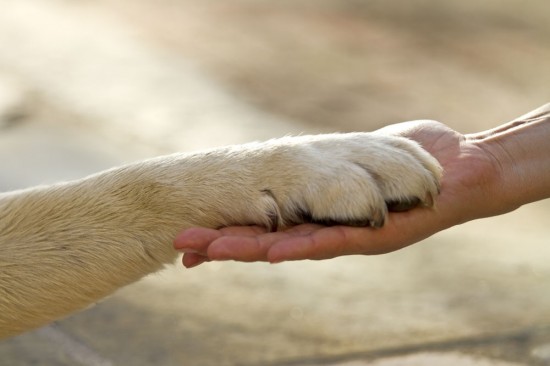
How the Reward System Works
Pets are like people in many ways, especially when it comes to motivation. You go to work each day because you’re motivated by your paycheck, the social interaction and the goal to win the Employee of the Month award again. Your dog wants the same thing, except for him it’s treats, time spent with you and the quest for a head scratch and enthusiastic “good boy”! You value your work rewards, and consequently you show up on time, work hard and try to look good in front of the boss. Because your dog values his rewards, he will repeat those behaviors that have previously worked.
Ways to Use Rewards for Training
The simplest of techniques involve rewarding your pet after he displays the behavior you’ve asked for. For example, you give the “sit” command, the puppy sits and then you give her a treat. But this approach will be even more effective if you work everyday rituals into the reward system – making your dog sit before giving her a meal, for example, or before putting on her leash for a walk. Food works especially well as a reward, but unless you want a pudgy pooch, you will have to find other effective rewards. Experts recommend a bit of playtime or a walk.
The Keys to Training Success
You’ve probably heard that dogs have limited attention spans and short memories, and this is largely true. Consequently, the reward must immediately follow the desired behavior. If you are training with verbal commands, keep them unique, short and consistent. “Sit,” “down,” “come” and “heel” are popular commands for a reason. Make sure that everyone in your household is using the same commands. For example, if the “down” command indicates that your dog should lie down on the floor, don’t let other family members use it when the dog puts his front paws on a visitor or gets on the couch. When you begin teaching your dog a new trick or behavior, reward him every time he displays the behavior. Once he’s consistent, reward him periodically going forward. If he becomes inconsistent in the future, increase the frequency of reward until he regains consistency. Finally, never punish your dog. When he exhibits unwanted behavior, get him to replace the behavior with a good one, even if it’s just for a second, then reward him.
The basic parameters of rewards-based training are simple to understand, but they can be extremely difficult to use at times, especially if your dog has behavioral challenges. In that case, it may be to the benefit of both you and your dog to seek out a professional dog-training program. Resident programs such as canine boot camps will provide an excellent environment for the trainer to impart new behaviors, then all you must do is maintain them. To ensure that your dog receives the most effective, compassionate treatment, be sure that your trainer uses a reward-based system for dog training.
 Vomiting, Regurgitation And Expectoration In Cats And Dogs - The Difference
Vomiting, Regurgi
Vomiting, Regurgitation And Expectoration In Cats And Dogs - The Difference
Vomiting, Regurgi
 6 Great Rewards For Your Dog
6 Great Rewards F
6 Great Rewards For Your Dog
6 Great Rewards F
 Caring For Your Pets - The Animal Welfare Act (2006)
Caring For Your P
Caring For Your Pets - The Animal Welfare Act (2006)
Caring For Your P
 Canine Eugenics And Breed Standards
Canine Eugenics A
Canine Eugenics And Breed Standards
Canine Eugenics A
 Five Feeding Faults That Lead To Fat Felines
Five Feeding Faul
Five Feeding Faults That Lead To Fat Felines
Five Feeding Faul
Copyright © 2005-2016 Pet Information All Rights Reserved
Contact us: www162date@outlook.com